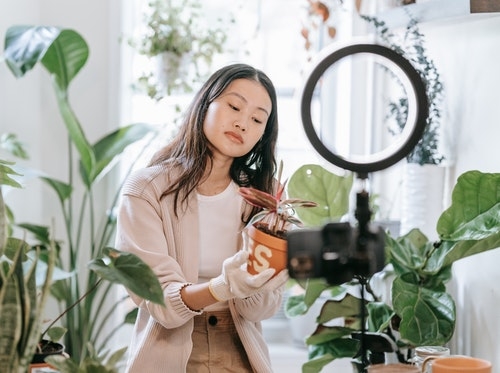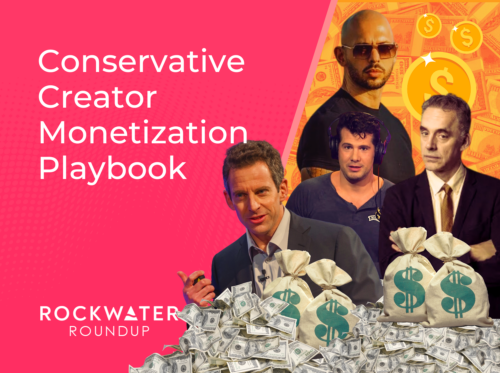ShopMy Raises $18.5M for Creator Affiliate Platform
RockWater Roundup
RockWater analysis to make you a better investor and operator. Today we discuss ShopMy’s 18.5M Series A fundraise, their traction to date, business model, increasing momentum around creator affiliate programs, and revenue mix between % and subscription fees.
—
Shopmy raised $18.5M for its Series A.
An exciting new datapoint in the high-growth creator affiliate marketing space.
Let’s break it down…
🤝DEAL DETAILS
- $18.5M Series A
- Led by Inspired Capital
- Other investors incl AlleyCorp, Scott Belsky (Adobe CSO), Jennifer Fleiss (Rent the Runway co-founder), Rand Currier (Granite co-founder) – early adopters became angels and advisors
- Previously raised $8M in 2022
💰USE OF FUNDS
- Scale network of 40,000 creators
- Hiring: engineering, product, sales, customer success
- Product dev: new features, expand to new platforms like Pinterest, Substack
- Expand to maternity, fitness, wellness, home decor, travel (now only works w/ beauty, lifestyle, fashion)
- “Take more risks”, previously very capital efficient
👀COMPANY OVERVIEW
- Affiliate mktg platform: helps creators connect w/ brands, monetize their content
- Problem to solve > Creators poorly monetize product recs, followers don’t have easy path to purchase
- Vision > Transform how creators share and monetize product recs
- Solution > World-class product and UX with every essential feature
- Creators get digital storefronts, access to millions of products, affiliate links, company chat
- Brands get talent discovery hub, campaign builder
- Biz model: “small commission” on creator sales, brands pay $999 subscription and more for features
- Direct competitors: LTK, GRIN
- Other competitors: IG Marketplace, TikTok’s affiliate program
- 42 (per website)
💡PERFORMANCE HIGHLIGHTS
- Creators have earned “tens of millions in commissions”
- 47,000+ brands on platform incl Nike, Chanel, NET-A-PORTER
- 250+ brands that are avail for creators to partner directly with
- Competes by having better features e.g. “Social Mentions” allows brands to track social mentions, “Lookbooks” allows brands to sell gifting requests ($2M gifted items in 4 months)
📝ORIGIN STORY
- Founded 2020 by Harry Rein, Chris Tinsley, Tiffany Lopinsky (mix of MIT, Harvard)
- Idea came when Tinsley was studying creator economy in college
🤔What else I find interesting…
There’s increasing momentum around creator affiliate programs.
I keep hearing about more and more service providers being launched to help scale this ecosystem, like companies providing setup / account mgmt / and strategy services for affiliate creators, influencer agencies launching new affiliate service divisions and making new hires, and more.
Very curious to what the “small commission” is on creator sales, and how the overall biz model works. Here are some numbers to sort through…
Most affiliate commissions to creators (i.e. you sell $XX amount of products or services, you get YY% commission rate) are in the 10% range – some quick research shows Amazon is around 4 to 5%, LTK can go up to 14 to 17% on the high end, and I’ve heard some platforms even offer up to 20% for special incentives / campaigns.
Then ShopMy charges a flat monthly fee to brands of $999, which goes up as brands use more features on the ShopMy platform.
So for the commission on creator sales, is that paid by the brand on top of their monthly fee, or paid by the creator as a portion of their affiliate commission rate, or split by both the brand and creator at some TBD rate?
And what is standard for other affiliate platforms?
I would think that ShopMy charges the % fee to the brands, to make creator rates as compelling as possible in order to help creator recruitment (e.g. “our creator affiliate rates are the most attractive vs other platforms”). As a marketplace, both brand AND creator participation are key to ShopMy being successful, but my hunch is that the platforms are prioritizing recruitment of high-quality and high-converting creators to drive near-term growth and platform adoption by additional brands.
But I’m not 100% sure here. Some press on the ShopMy positions the fee as being incurred by creators, but the language is murky.
(Of note, the chicken or the egg debate about “what’s more important to build social commerce marketplaces: brands or creators?” is an oft-discussed topic, and I remember talking about this on stage at Vidcon 2023 as it pertains to live and social commerce!)
Continuing on the % fee and business model points, it makes me curious about what the long term unit economics are at scale, and as more entrants enter the affiliate space. Where will the both the % of sales rates by the affiliate platforms, and the creator affiliate commission rates, settle that reflect a balance of an increasingly competitive marketplace, but that ensures enough margin is going to these affiliate platforms to cover both variable and fixed costs as they scale up? And that also ensures creators are making enough in fees so they can pay for the increasing support they need to do affiliate programs at scale, while balancing the growth of their overall creator businesses?
A lot to sort out. Open to all feedback here, so please DM me if you have a POV here.
And one last thought…what’s the mix of revenue from % of creator sales VS subscriptions?
Since creator sales are done as %, the revenue potential there is much higher than the subscription fees. But the different biz model for each makes sense – brands have high marketing budgets and can afford upfront and recurring payments. This enables ShopMy to get cash immediately in the door, and then boost financial performance (and thus valuation) since there’s a mix of both % fees as well as ARR.
Would love to see this breakdown.
—–
I’m the founder of RockWater Industries. We do financial and strategy advisory for media, agencies, and creator economy. From M&A and fundraising to consumer research and go-to-market planning.
DM me on LinkedIn or email me chris @ wearerockwater dot com



